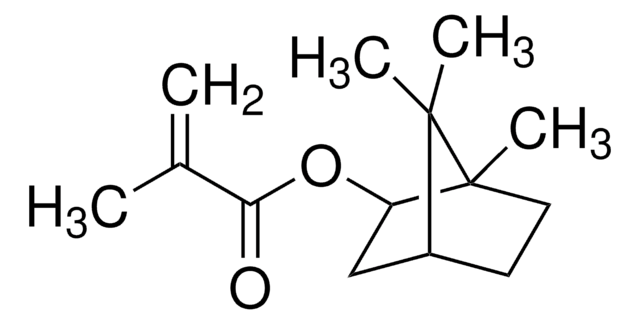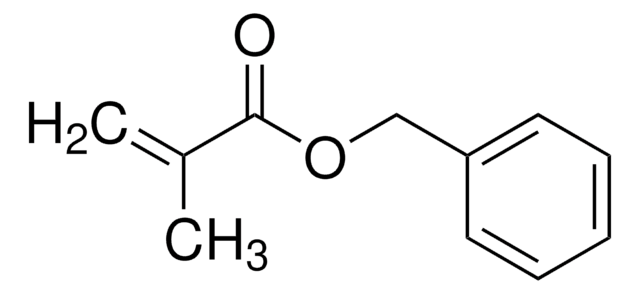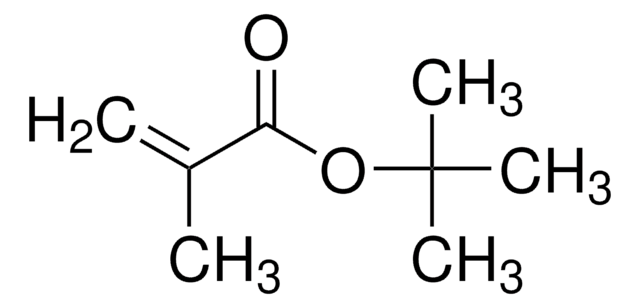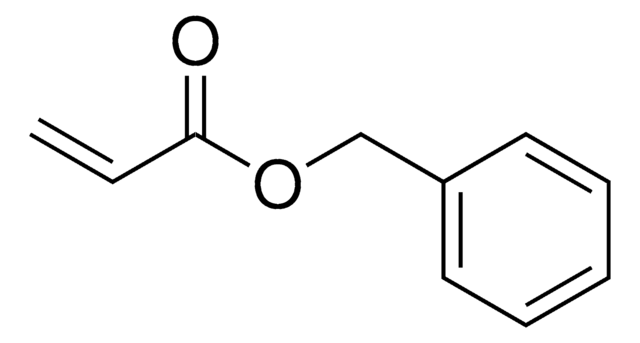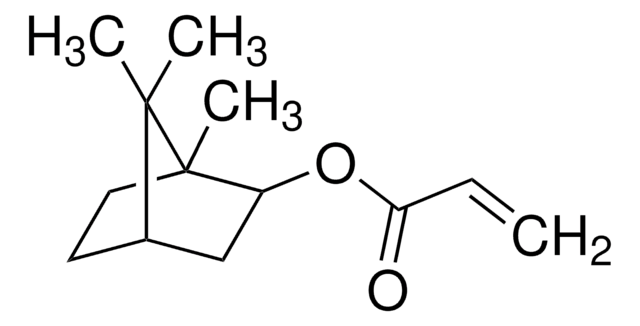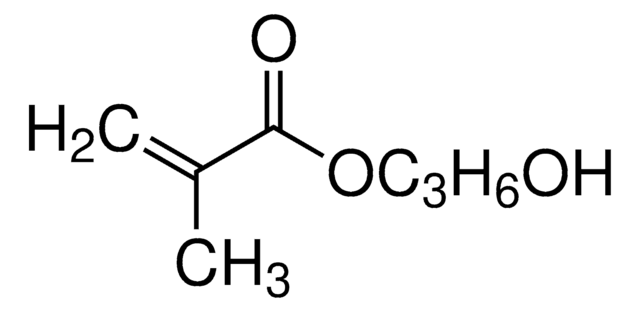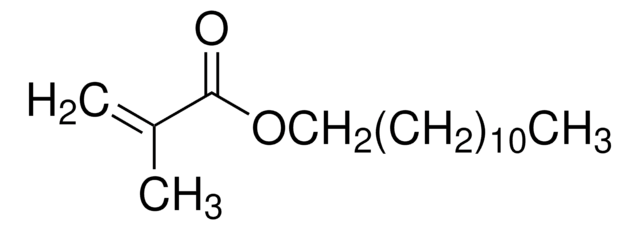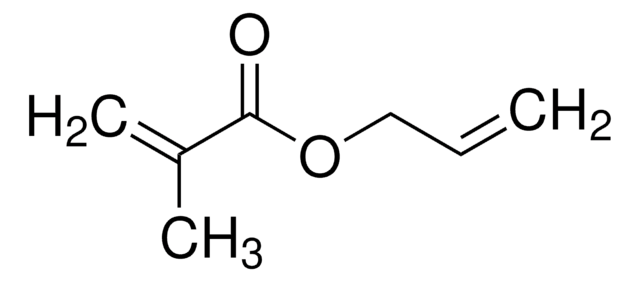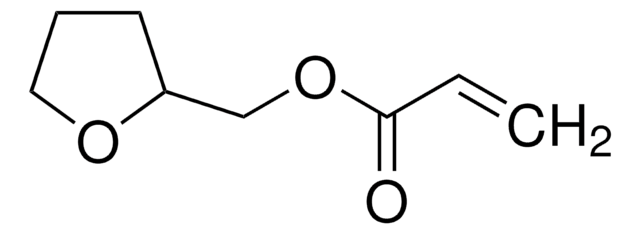408964
Cyclohexyl methacrylate
≥97%, contains ~60 ppm monomethyl ether hydroquinone as inhibitor
Synonyme(s) :
Methacrylic acid cyclohexyl ester
About This Item
Produits recommandés
Niveau de qualité
Pureté
≥97%
Forme
liquid
Contient
~60 ppm monomethyl ether hydroquinone as inhibitor
Indice de réfraction
n20/D 1.458 (lit.)
Point d'ébullition
68-70 °C/4 mmHg (lit.)
Densité
0.964 g/mL at 25 °C (lit.)
Chaîne SMILES
CC(=C)C(=O)OC1CCCCC1
InChI
1S/C10H16O2/c1-8(2)10(11)12-9-6-4-3-5-7-9/h9H,1,3-7H2,2H3
Clé InChI
OIWOHHBRDFKZNC-UHFFFAOYSA-N
Vous recherchez des produits similaires ? Visite Guide de comparaison des produits
Catégories apparentées
Description générale
Application
- As a monomer to prepare poly(cyclohexyl methacrylate) (PCHMA) thin films for high-performance luminescent solar concentrators(LSCs). These LSCs can be used to fabricate high-quantum yield photovoltaic solar cells.
- As a comonomer to prepare photo-patternable quantum dot-acrylate resins for fabricating light-emitting diodes with high color transparency.
- As a monomer to synthesizesuperhydrophobic silica nanoparticle surfaces for various applications such as anti-corrosionsurfaces, drag reduction, and energy conservation.
Mention d'avertissement
Warning
Mentions de danger
Conseils de prudence
Classification des risques
Eye Irrit. 2 - Skin Irrit. 2 - Skin Sens. 1 - STOT SE 3
Organes cibles
Respiratory system
Code de la classe de stockage
10 - Combustible liquids
Classe de danger pour l'eau (WGK)
WGK 1
Point d'éclair (°F)
181.4 °F
Point d'éclair (°C)
83 °C
Équipement de protection individuelle
Eyeshields, Gloves, type ABEK (EN14387) respirator filter
Certificats d'analyse (COA)
Recherchez un Certificats d'analyse (COA) en saisissant le numéro de lot du produit. Les numéros de lot figurent sur l'étiquette du produit après les mots "Lot" ou "Batch".
Déjà en possession de ce produit ?
Retrouvez la documentation relative aux produits que vous avez récemment achetés dans la Bibliothèque de documents.
Les clients ont également consulté
Notre équipe de scientifiques dispose d'une expérience dans tous les secteurs de la recherche, notamment en sciences de la vie, science des matériaux, synthèse chimique, chromatographie, analyse et dans de nombreux autres domaines..
Contacter notre Service technique